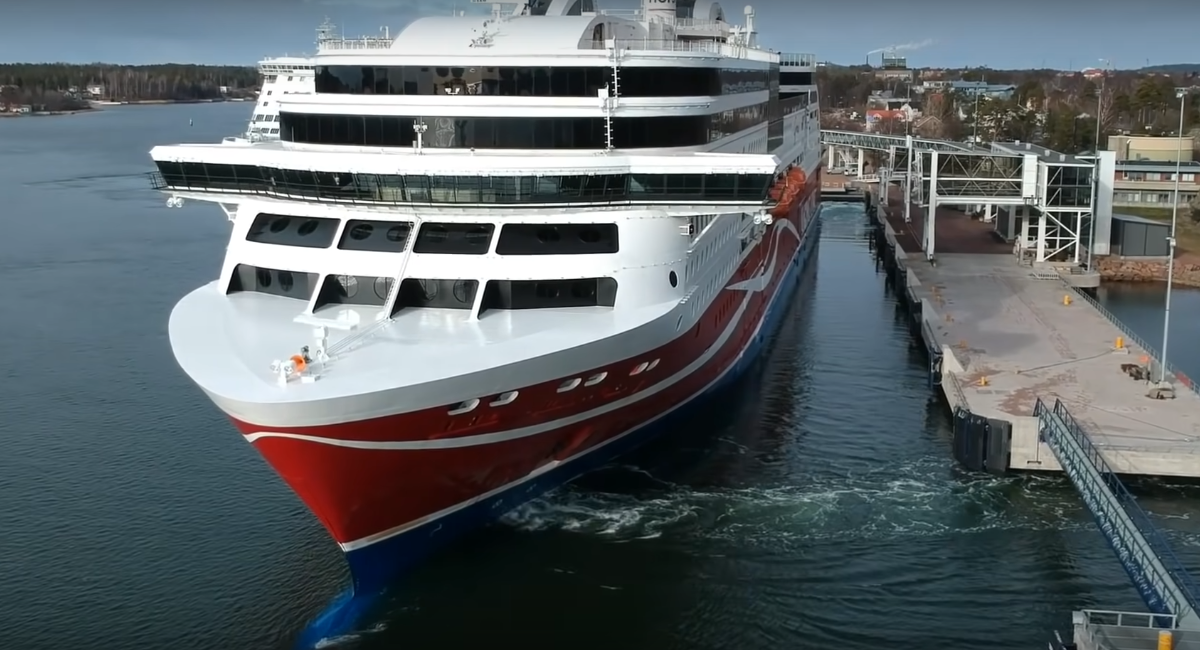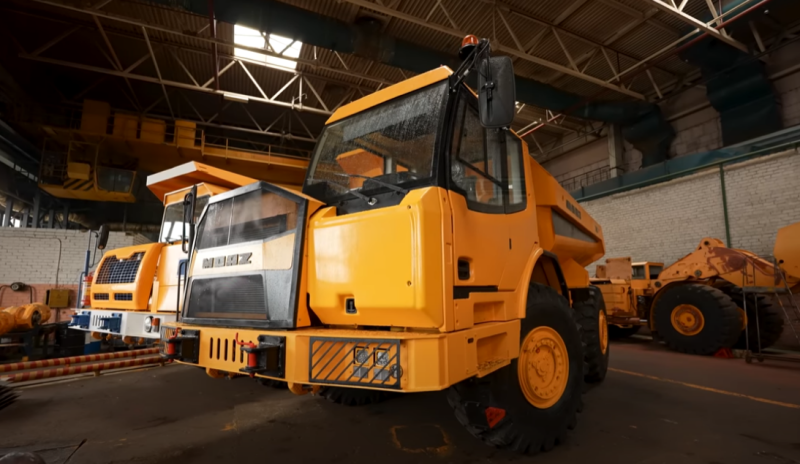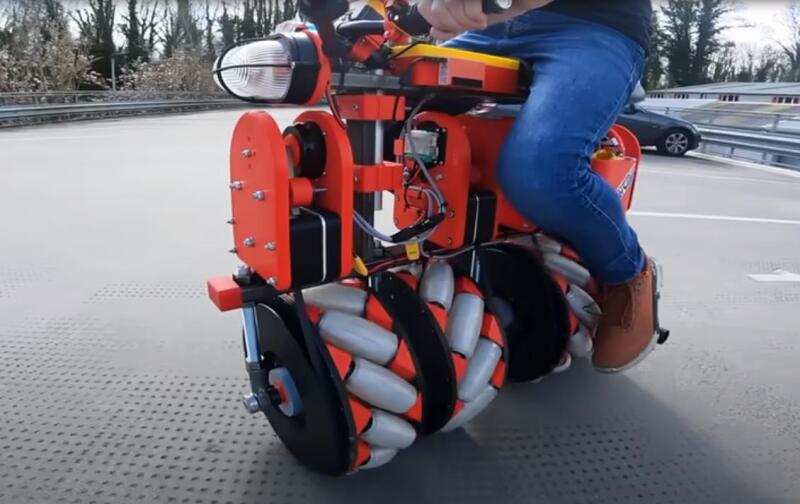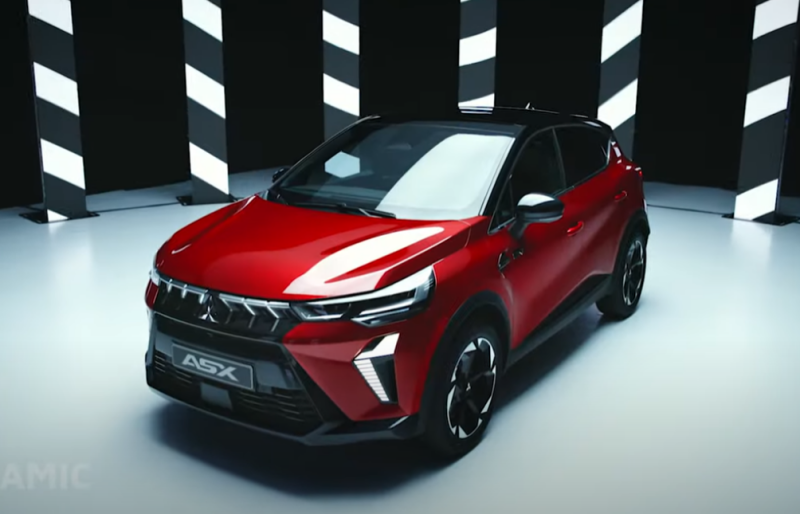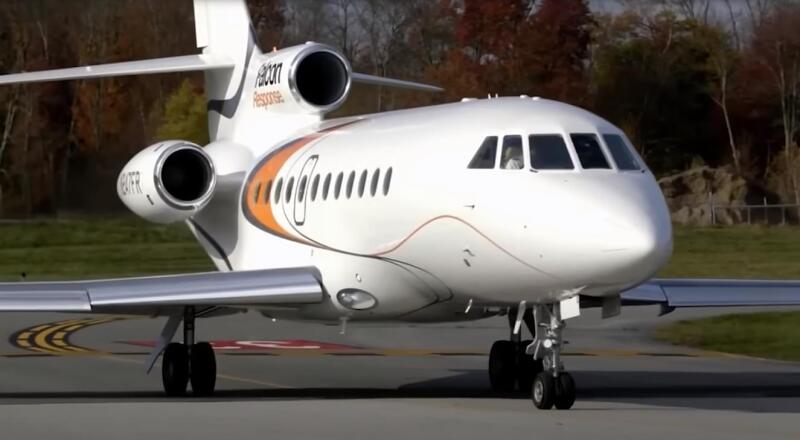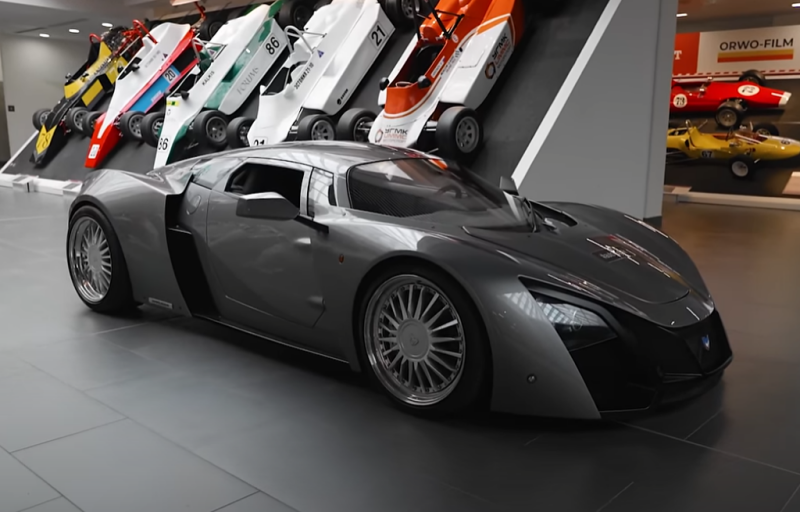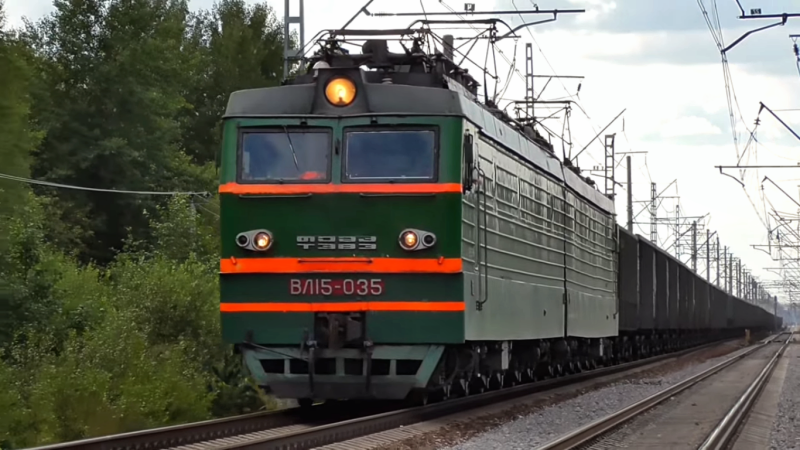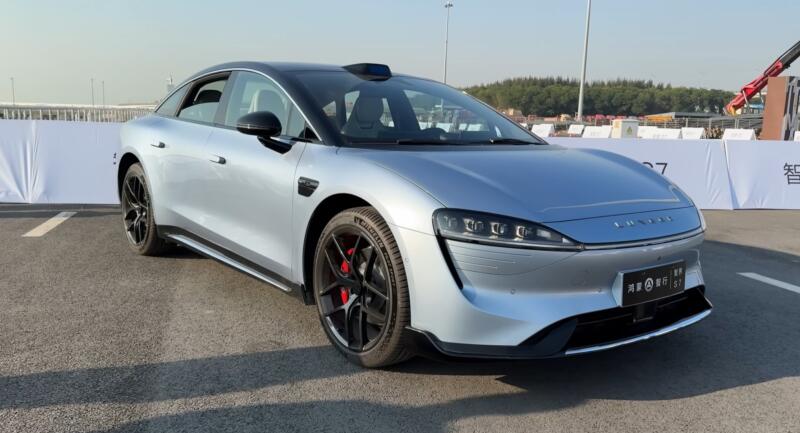 After all, this is what the ferry looked like in our childhood, isn’t it? Photo: privole.ru
After all, this is what the ferry looked like in our childhood, isn’t it? Photo: privole.ruWhat do we imagine when we talk about ferry crossings and actually about ferries? Personally, up to a certain moment, images from Soviet films popped up in my memory - a cable stretched across the river and a huge raft moving along it with the help of muscular strength and strong words of hefty men. In part, such associations were confirmed by personal impressions - traveling with my parents, and then on my own, along the middle lane, I met many of these in the Russian outback. Yes, I saw something more modern and mechanized. For example, more than once I had the opportunity to cross on a ferry that ran between the Curonian Spit and Klaipeda. There were (and still are, by the way) small boats with a flat deck that cars could drive into. Such a ferry cable is no longer needed. Although a strong word sometimes comes in handy.
 A more advanced version of the ferry. Already on her own. Photo: drive2.ru
A more advanced version of the ferry. Already on her own. Photo: drive2.ruAll my ideas turned upside down at once in the mid-90s, when I first found myself on a ferry from Polish Gdynia to Swedish Karlskrona. I saw a huge ship that looked more like an ocean liner than anything that I had previously associated with the word "ferry".
In general, ferry service is very popular in the Baltic. Several factors contribute to this:
- ★ Relatively small distances between ports - the time of one transition rarely exceeds a day;
- ★ The generally calm nature of the Baltic Sea. As a rule, there are no strong storms here;
- ★ High demand.
Ferry lines connect various ports of Sweden, Finland, Germany, Poland, Russia, Latvia, Estonia. Several major operators operate in these areas:
- ★ The Estonian company Tallink Silja is the largest ferry carrier in the Baltic;
- ★ Shipping concern Viking Line from Finland;
- ★ Latvian carrier Ave Line;
- ★St. Petr Line is in fact a Russian operator, but registered, as usual, in Cyprus;
- ★ Linda Line (Estonia);
- ★ Finnline and others.
Moreover, the ferry service in the Baltic performs both a transport function (moving cars and goods from one port to another) and a cruise function, when the points of departure and arrival are the same port. By the way, this is well known to the residents of St. Petersburg, whose harbor is regularly visited by ferries from neighboring Finland. Among the Finns, “weekend alcohol cruises” are very popular - after a hard week of work, get out for the weekend to the “land of cheap alcohol”, properly “hang out” and return to your offices by Monday.
 Two Viking ferries. Photo: youtube.com
Two Viking ferries. Photo: youtube.comTherefore, ferries in the Baltic directions are not just large and capacious sea vessels. These are real floating hotels and entertainment centers.
You can understand what a modern sea ferry is on the example of the M / S Viking Grace, owned, as you might guess, by Viking Line. This is one of the largest and most modern ferries in the Baltic Sea.
The vessel was built in 2012 and put into operation in January 2013. From the very beginning, the ferry was intended to operate on only one line, along the route Turku (Finland) - Marienhamn (Aland Islands, Finland) - Stockholm (Sweden).
M/S Viking Grace is a very large ship, 218 m long and almost 32 m wide. In terms of height, visually the ferry does not seem very high, even despite the relatively small draft - only 6,8 m. For comparison, comparable in dimensions and displacement, our "legendary" aircraft-carrying cruiser, the smoker of the sky "Peter the Great" sags under water by more than 10 meters. However, a small draft is a distinctive feature of all ferries.
 Ferry "Viking Grace" is the flagship of its company. Photo: youtube.com
Ferry "Viking Grace" is the flagship of its company. Photo: youtube.comBut! The Viking Grace has 12 decks, that is, it is a real floating 12-storey house! Imagine and feel. Not all decks of this monster are intended for passengers - some are occupied by the engine room, cargo area for cars (including heavy ones) and office space. But passengers also have a place to roam!
By the way, there can be a lot of passengers. At a time Viking Grace is able to transport 2800 people and 550 (!) Cars.
A distinctive feature of the M/S Viking Grace is that it is the first ship in the Baltics to be powered by "environmentally friendly" liquefied natural gas (LNG). If for some reason, refueling with gas is not possible, ferry cars are happy to digest diesel fuel and even fuel oil. Of course, there is no need to talk about the purity of the exhaust in this case.
 Large cylinders in the stern of the ship contain enough gas for two or three days of sailing. And no more! Photo: youtube.com
Large cylinders in the stern of the ship contain enough gas for two or three days of sailing. And no more! Photo: youtube.comThere are four engines, with a total capacity of 41000 (forty-one thousand!) HP. With. In addition to the main power plant, the Viking Grace is equipped with a so-called rotary sail. A huge rotating pipe with a height of 24 m and a diameter of 4 m is located on the upper deck of the ship. The operation of a rotor sail is based on the Magnus effect - when the tube rotates, the air pressure in the rear becomes higher than in the front, which creates a pushing impulse. However, such a sail was installed on the Grace only as an experiment - the company evaluates its effectiveness and economic feasibility.
 It's not an exhaust pipe. It's a rotary sail! Photo: youtube.com
It's not an exhaust pipe. It's a rotary sail! Photo: youtube.comBut even without the help of a sail, the ferry is capable of reaching a speed of 22 knots or 40 km / h in our usual “land” units. A lot for such a big vessel!
Being a modern vessel, M/S Viking Grace is packed with electronic control systems. Most of the route the ferry runs on autopilot. Manual control is used, as a rule, only when entering the port and mooring. Moreover, there are no huge steering wheels in the wheelhouse - maneuvering is done using a small joystick. Electronics, by the way, also controls the operation of the power plant, turning off, if necessary, part of the engines in order to save fuel.
 Control room. No helm, no stern sailor with a pipe in his mouth... Photo: youtube.com
Control room. No helm, no stern sailor with a pipe in his mouth... Photo: youtube.comBut the most interesting thing for a traveler is not in the engine room or wheelhouse (they won’t let you in anyway), but on the passenger decks.
Do you know what is most striking when you first find yourself on a large modern ferry? The complete absence of pitching! People suffering from seasickness can safely step on board such a vessel. I have never been in a storm, but even with a relatively high wave, the pitching on the deck is almost not felt. For this, sea ferries are equipped with special mechanisms, the so-called roll stabilizers. Of course, the M/S Viking Grace is also equipped with them.
 Ship's Engineering Systems Control Center. Photo: youtube.com
Ship's Engineering Systems Control Center. Photo: youtube.comSo that passengers who are free from seasickness can spend their free time interestingly, a lot of entertainment is provided for them on board the Viking Grace for different tastes. For those who like to eat, there are four restaurants on three decks at once. By the way, the ship's crew includes 45 cooks - enough to feed all the suffering. It is easy to have a bite to eat or just “throw in” in cafes and bars, carefully scattered throughout the ship.
Relax on the road will be offered in the spa area with panoramic views of the surroundings. And even though most of the way in this panorama there is only one program, “again about the sea”, but how great it is to lie in a hot jacuzzi and look at the cold waves of the Baltic!
For those who do not have enough thrills in life, there is a casino. However, knowledgeable people do not play in "floating" casinos - the rules are strict and very disadvantageous for players.
 Slot machines are located not only in the casino, but on all "entertainment" decks. Lure... Photo: youtube.com
Slot machines are located not only in the casino, but on all "entertainment" decks. Lure... Photo: youtube.comOn board the Viking Grace there is a large hall with a concert venue, where various show programs are held, live music is played. So there is room for dancing.
If you are traveling with children, and the soul asks for a holiday, children's play areas will come to the rescue, where the children will be under close supervision not to interfere with their parents.
 There are several play centers for children on board the ferry. Photo: youtube.com
There are several play centers for children on board the ferry. Photo: youtube.comShoppers are not deprived of attention either. M/S Viking Grace has the largest floating Duty-free store in the Baltics. The range, of course, is not amazing, but the price tags can please.
To accommodate passengers, Grace offers 880 cabins of varying degrees of comfort and coziness. Since the ferry has sufficient width, the cabins are arranged in four rows. For the most economical travelers, four-seater compartments of the two central rows are intended - they do not have portholes, as expected, but they are cheaper. Cabins located along the sides are more expensive, but they allow you to admire the seascapes. Moreover, the portholes on Viking Grace are not small viewing “holes”, but almost full-wall panoramic windows. All cabins are equipped with a private bathroom with shower.
 Quadruple cabin category Side View. On the walls there are folding shelves, as in a railway compartment. Photo: youtube.com
Quadruple cabin category Side View. On the walls there are folding shelves, as in a railway compartment. Photo: youtube.comThose who prefer to travel more comfortably can choose a cabin that is larger and "smaller". And for sybarites, two-room apartments with a personal sauna are intended.
 Mid-range cabin. Photo: youtube.com
Mid-range cabin. Photo: youtube.comAt the same time, sybarites do not have to be rich! The most expensive suite for the entire cruise from Turku to Turku will cost only 500 euros. And a place in the cheapest cabin costs only 26 euros! Economy class!
 The most expensive deluxe room. There are only four of them. Photo: youtube.com
The most expensive deluxe room. There are only four of them. Photo: youtube.comWell, if the purpose of your trip is not a journey, but a simple movement in space, you can not take a cabin at all and spend time either on the “recreational” decks or in a special “waiting room” equipped with rows of seats, like an airplane.
Yes, Grace is one of the largest and most modern ferries in the Baltic. But others, albeit smaller, are not much inferior to him in terms of comfort. From my own experience, I can say that traveling by ferry is a very exciting experience. On the one hand, the cruise turns out to be short and does not tire, on the other hand, it gives a lot of interesting impressions. Yes, and it is relatively affordable. So, there will be an opportunity - do not refuse!
